-
Surfing Museum Lighthouse in Santa Cruz
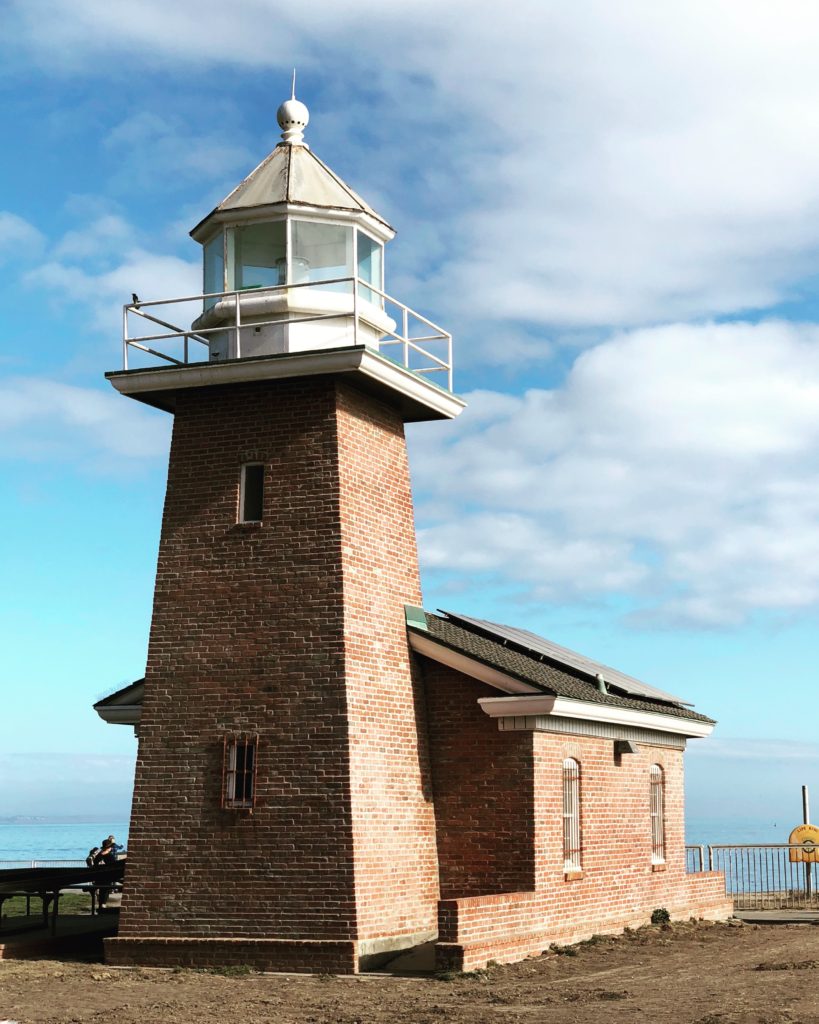 “Let’s go surfin’ now, everybody’s learning how, come on and safari with me” begins the popular Beach Boys song “Surfin’ Safari”. This could well be the theme song of the beautiful seaside city of Santa Cruz, California. Surfing is an obsession here. Legend has it that three Hawaiian princes first brought surfing to America while visiting Santa Cruz in the 1800s. This is the story of how a lighthouse built shortly after the civil war transformed into a shrine to surfing culture.
“Let’s go surfin’ now, everybody’s learning how, come on and safari with me” begins the popular Beach Boys song “Surfin’ Safari”. This could well be the theme song of the beautiful seaside city of Santa Cruz, California. Surfing is an obsession here. Legend has it that three Hawaiian princes first brought surfing to America while visiting Santa Cruz in the 1800s. This is the story of how a lighthouse built shortly after the civil war transformed into a shrine to surfing culture. 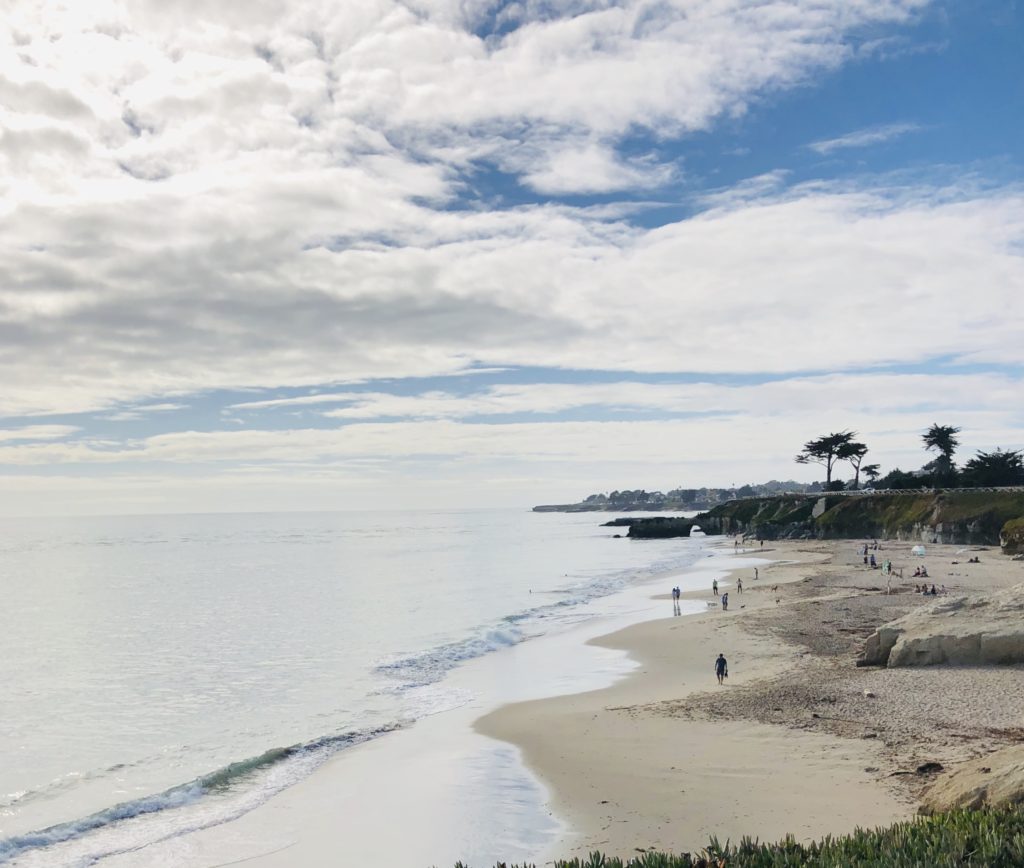
The beach north of the museum offers a serene view. Santa Cruz’s original lighthouse was completed in 1870, constructed at Point Santa Cruz and modeled after the Ediz Hook Lighthouse in Washington Territory. By 1878, the prolific formation of new sea caves along the cliffs at Point Santa Cruz began to jeopardize the lighthouse’s structural integrity, with the potential for collapse. It was removed from its foundation and moved on wooden rollers three hundred feet further inland, using a team of horses.
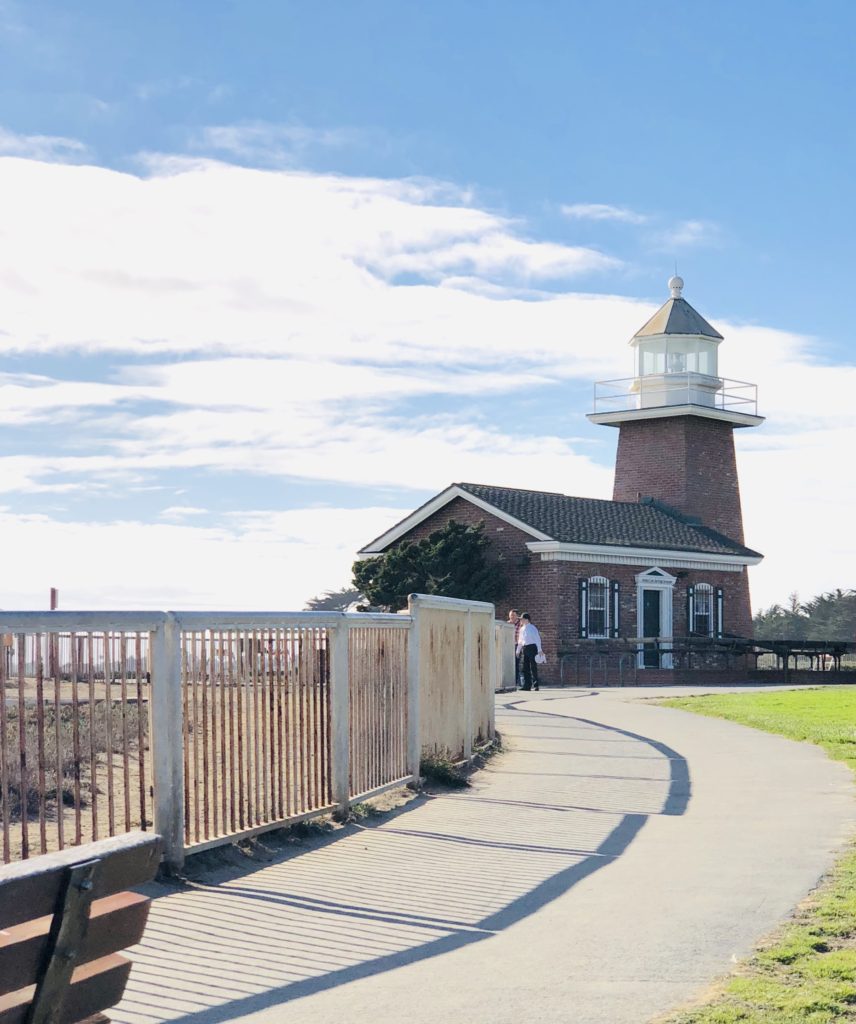
A handful of lighthouse keepers and their families lived at Point Santa Cruz. The most notable was Laura Hecox, the daughter of the first lighthouse keeper, Adna Hecox. When her father passed away, she became the official keeper, a job she held until her resignation in 1916. Laura began the study of shells and amassed an expansive and well-renowned collection of artifacts, some of which can be viewed today at the Santa Cruz Museum of Natural History.
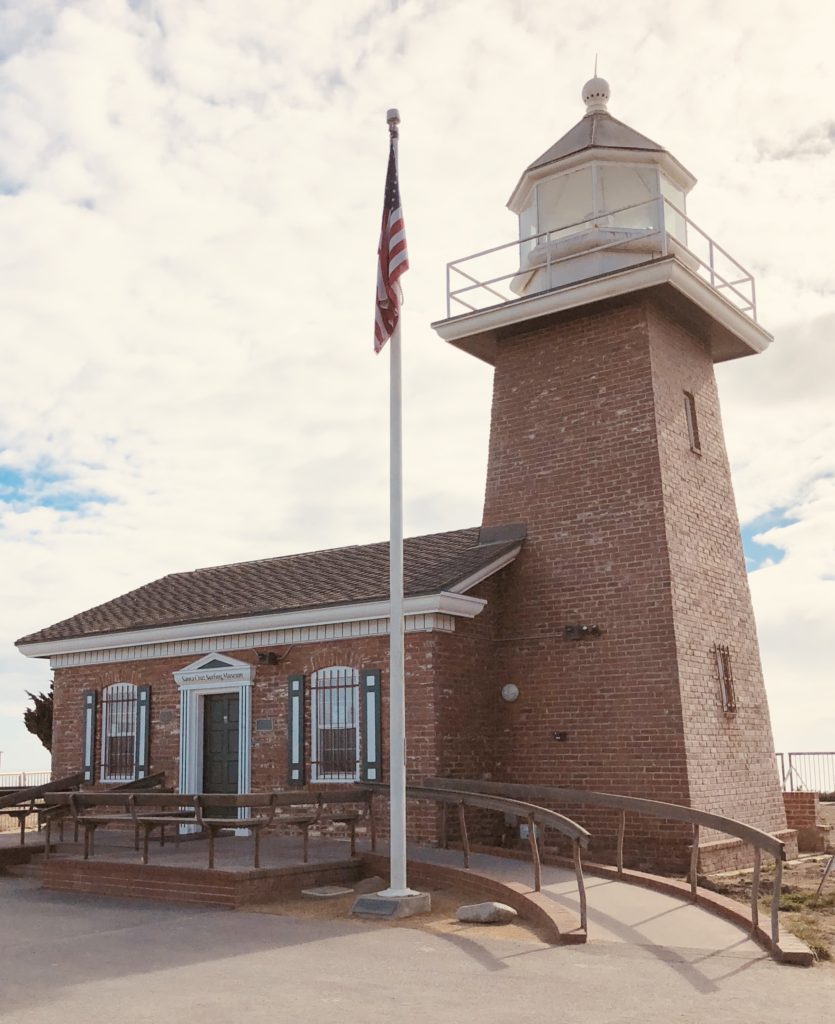
In 1941, the Coast Guard built a twenty-six-foot high tower 200 feet seaward of the lighthouse which became the station’s official beacon, and the original lighthouse and grounds were leased to the city of Santa Cruz for a park. In 1948, the Coast Guard sold the aging lighthouse with the stipulation that it be entirely removed from the property. A local carpenter purchased it and completely dismantled it for the lumber. The city of Santa Cruz later purchased the property at the site of the original lighthouse. The lighthouse that had stood here for over seventy years was gone forever. This could have been the end of the story, but a tragic accident brought about a very beneficial reinvention.
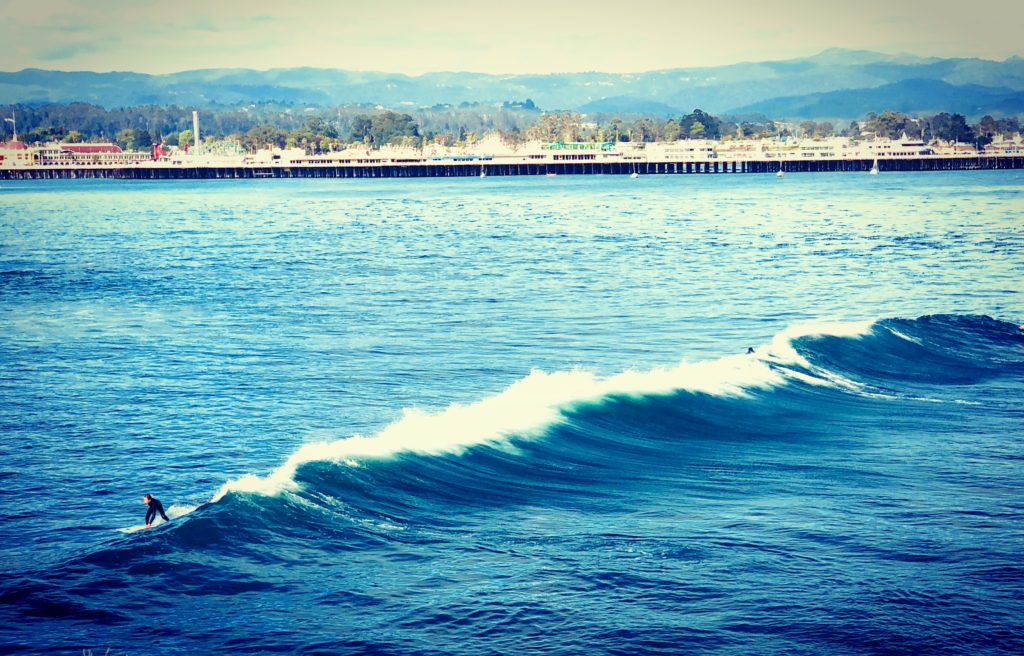
It’s fun to watch today’s surfers catching waves. In the background is Santa Cruz’s beach boardwalk. Surfing can be a perilous sport, and in 1965, a promising young 18-year-old surfer named Mark Abbott lost his life at nearby Pleasure Point surf break. In 1967, Mark’s grieving parents wanted to do something positive to commemorate their son. They donated life insurance money for the completion of a new 550 square foot new lighthouse in honor of their son. The Abbott Memorial Lighthouse was built of red brick and featured a lantern from the defunct Oakland Harbor Lighthouse. A beautiful plaque inside the lighthouse reads “This lighthouse is further dedicated to all our youth whose lives, through fate or misadventure, are terminated before realizing their true potential. May their spirits find new dimension in the unknown horizons that await us all.”
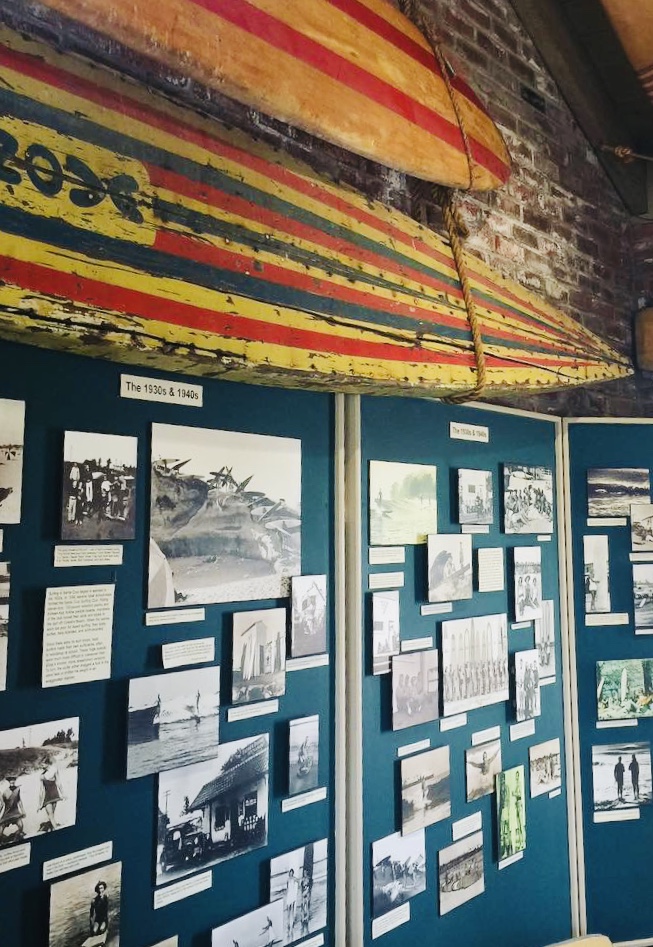
In 1986, the lighthouse became home to the Santa Cruz Surfing Museum, the first surfing museum in the world. In 2008, it was nearly closed due to city budget difficulties. The Santa Cruz Surfing Club Preservation Society raised enough money to keep the lighthouse open temporarily, and other donors soon came forward to rescue the museum.
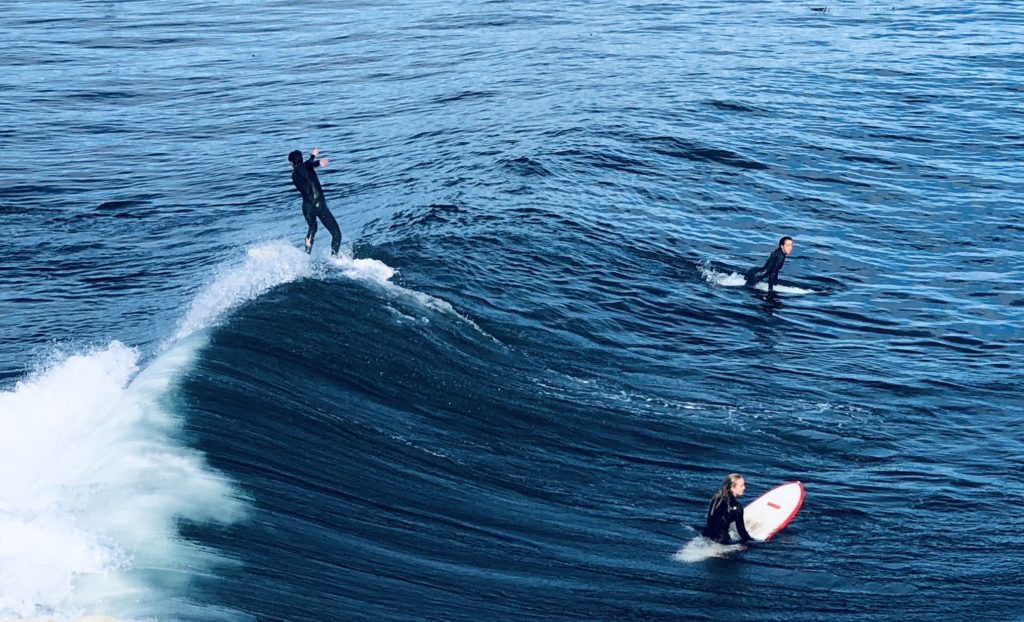
While I am not a surfer, I was truly impressed by the extensive collection of photographs, videos, surfboards, and other surfing memorabilia in the museum. Notable features include locally crafted redwood surfboards from the 1930s and the very first wetsuit invented by Santa Cruz native Jack O’Neill. You really feel the passion that this sport has elicited in people and the historic role (over 100 years) it has played in the area. Santa Cruz is highly respected in the surfing world. In 2011, Santa Cruz received approval as a World Surfing Reserve, ranking highly on criteria such as wave quality and consistency, surf culture and history, and its unique environmental characteristics. There are over 23 surf spots in the region, including the iconic Steamer Lane and Pleasure Point.
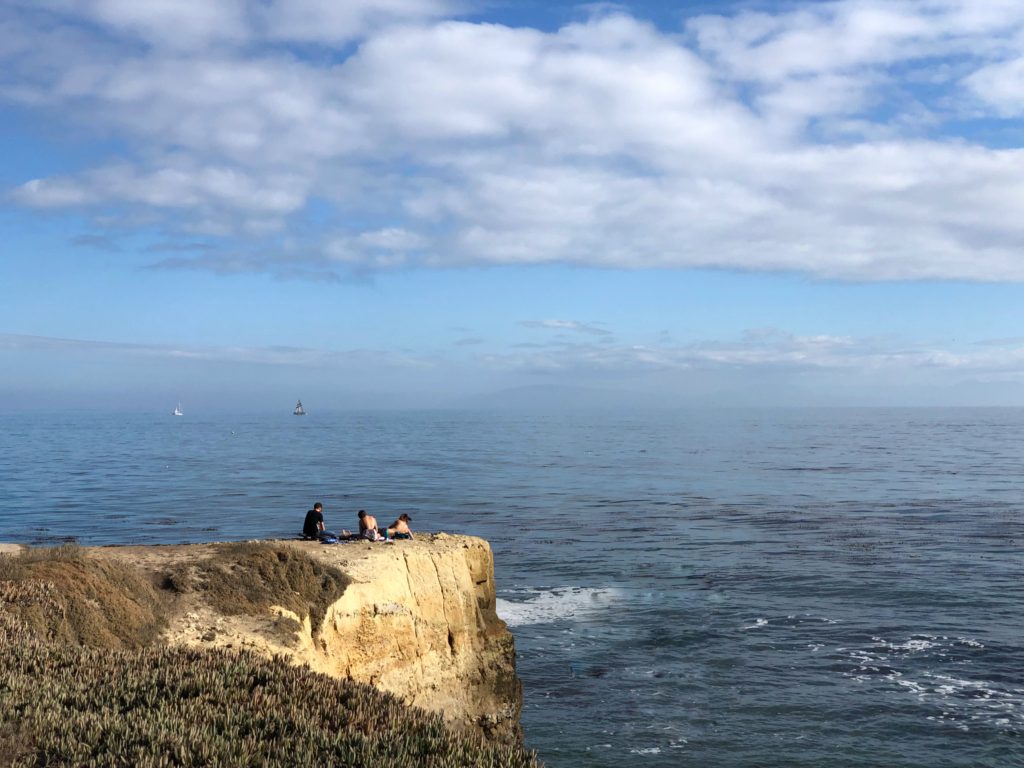
It is a beautiful place to relax and contemplate the sea and sun. The museum/lighthouse has been a staunchly revered local landmark and hosts the annual “Caroling Under the Stars” tradition each Christmas. Admission to the museum is free but donations are welcome. There are numerous benches around the area and it is wheelchair accessible. It is a beautiful and peaceful place to sit and watch the surfers, enjoy a picnic lunch, or just bask in the sunshine while enjoying the beautiful beach.
Location: 701 West Cliff Drive, Santa Cruz, CA 95060
Summer Hours (July 4 – Labor Day): 10:00 a.m. – 5:00 p.m. (closed Wednesdays)
After Labor Day Hours: Noon – 4:00 p.m. (closed Tuesdays and Wednesdays) and
Phone: 831 420-6289
Helpful Hints: No restrooms are on the premises, but public restrooms are available approximately one block south of the museum on the opposite side of the street.
More Information: Santa Cruz Lighthouse and Surfing Museum
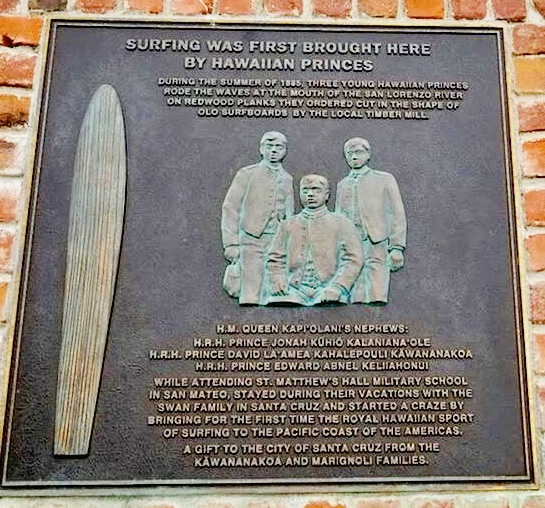
Plaque commemorating Hawaiian Princes who introduced surfing to Santa Cruz in 1885. Thank you for visiting my blog! Wishing you peace, love, happiness, and beautiful vistas!
-
Point Sur Lighthouse in Big Sur, California
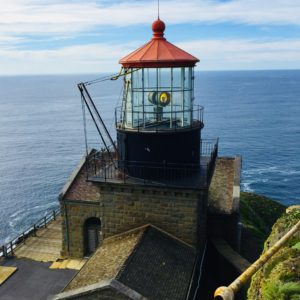 Located between Carmel and Big Sur, the 48-foot high sandstone Point Sur lighthouse stands duty, warning ships approaching the treacherous coast. Point Sur, a National Historic Landmark, is the only complete turn-of-the-century light station open to the public in California. The lighthouse was originally fueled by whale oil, lard oil, and kerosene before becoming electric in 1948. It used a Fresnel lens invented by Augustin Jean Fresnel, a French physicist, until the 1970s. It is still in use today, operated by the U.S. Coast Guard.
Located between Carmel and Big Sur, the 48-foot high sandstone Point Sur lighthouse stands duty, warning ships approaching the treacherous coast. Point Sur, a National Historic Landmark, is the only complete turn-of-the-century light station open to the public in California. The lighthouse was originally fueled by whale oil, lard oil, and kerosene before becoming electric in 1948. It used a Fresnel lens invented by Augustin Jean Fresnel, a French physicist, until the 1970s. It is still in use today, operated by the U.S. Coast Guard. 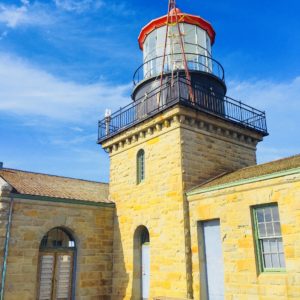
During its history, Point Sur has been home to four lightkeepers and their families. Beginning in 1899 up until 1974, these lighthouse keepers and their families lived in isolation in this remote and desolate place. Supplies were brought every four months by ship. It is hard to imagine what life must have been like for these folks, without the modern conveniences that we take for granted and so distant from the rest of the world. To live at Point Sur clearly required grit. Point Sur could originally be reached only by boat, as it was an island. Now, it is reached by walking a little less than a mile from the parking lot below.
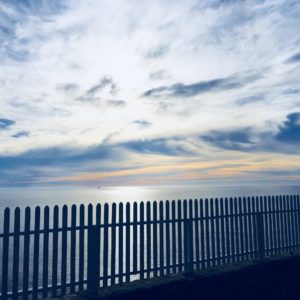 Despite a light that could be seen for 23 nautical miles and a coal-powered fog horn, the Point Sur lighthouse still witnessed its share of shipwrecks. If you are interested in ghosts and haunted places, you may enjoy the Ghost Hunts and annual Halloween Tours. Nature lovers may also enjoy the Whale Watch Tours. Gray whales are often seen on their migration route during the winter and during the summer you may see humpback and blue whales.
Despite a light that could be seen for 23 nautical miles and a coal-powered fog horn, the Point Sur lighthouse still witnessed its share of shipwrecks. If you are interested in ghosts and haunted places, you may enjoy the Ghost Hunts and annual Halloween Tours. Nature lovers may also enjoy the Whale Watch Tours. Gray whales are often seen on their migration route during the winter and during the summer you may see humpback and blue whales. 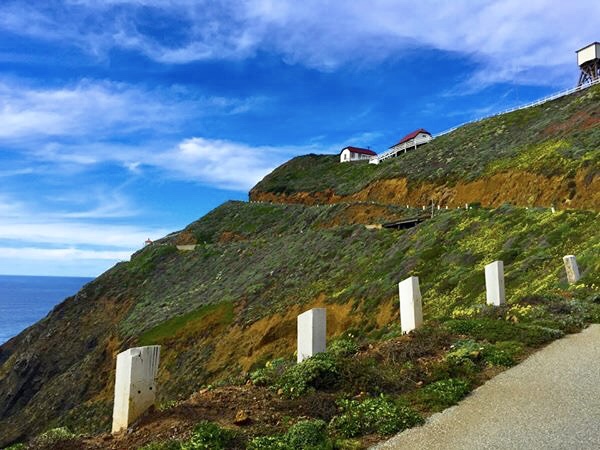 Tours last approximately three hours and are led by docents. It can be very cold and blustery so bring a jacket or sweater to be on the safe side. You will also have to do a great deal of walking, so sensible footwear is advised. You have to climb almost a mile with a 360-foot elevation to get to the lighthouse. There is a picnic area surrounded by a cute picket fence so bring a lunch and enjoy the amazing views! If you are planning on visiting the lighthouse and have questions regarding parking, fees, and tour schedules, call 831-625-4419 or see Point Sur Lighthouse
Tours last approximately three hours and are led by docents. It can be very cold and blustery so bring a jacket or sweater to be on the safe side. You will also have to do a great deal of walking, so sensible footwear is advised. You have to climb almost a mile with a 360-foot elevation to get to the lighthouse. There is a picnic area surrounded by a cute picket fence so bring a lunch and enjoy the amazing views! If you are planning on visiting the lighthouse and have questions regarding parking, fees, and tour schedules, call 831-625-4419 or see Point Sur Lighthouse- September through March Tours are Saturday and Sunday at 10:00 am and Wednesday at 1:00 pm
- April through August Tours are Saturdays and Wednesdays at 10:00 am and 2:00 pm, Sundays 10:00 am, and only in July and August, Thursdays at 10:00 am
- For regular tours, adults are $15, ages 6-17 are $5, and children 5 and under are free
- Moonlight Tours in 2018 are Sunday, August 26 and Monday August 27 at 6:45 pm, and Monday, September 24 and Tuesday, September 25 at 6:00 pm
- For Moonlight tours, adults are $20, ages 6-17 are $10, and ages 5 and under are free
- Arrive early; first come, first served (reservations are not accepted)
- Visa, Mastercard, American Express and Discover are accepted
- No visitors may remain in their vehicles
- No pets ( even left in cars), large motorhomes or campers, baby strollers, or smoking is allowed
Thank you for visiting my blog! Wishing you peace, love, happiness & beautiful vistas!